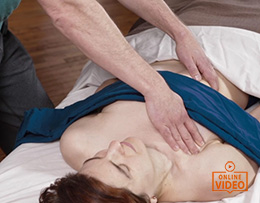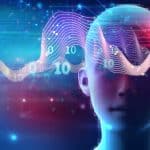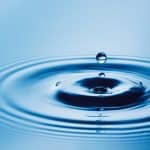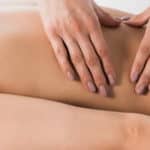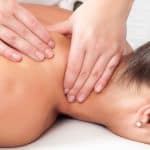Sign up for our free Natural Wellness newsletter! Gain lifestyle suggestions for supporting a healthy heart and stress management, tips and advice on exercising and maintaining a healthy weight, how to beat fatigue, ways to decrease joint pain, as well as learn valuable facts about kidney health.
One of the primary reasons for client visits to clinically oriented massage practices is back pain. Recognizing the signs of kidney inflammation enables therapists to differentiate it from a muscular strain/sprain.
Often mistaken to be tense or strained back muscles, kidney inflammation’s most prominent symptom can be back pain. Three kidney inflammatory conditions that can cause back pain are:
- Nephritis — kidney infection
- Renal calculi — kidney stones
- Polycystic kidneys
When a client complains of back pain, from the lower-thoracic to the mid-lumbar regions, it is important to rule out kidney inflammation. When the kidneys are not functioning optimally, the body’s ability to manage fluid balance is impaired, often resulting in edema. Systemic circulatory massage is inappropriate for these individuals, as it would push more fluid through an already overburdened system. Additionally, if the kidneys are inflamed, they are more susceptible to injury from vigorous massage. The kidneys are vulnerable because they are only partially protected by the rib cage. The right kidney’s location underneath the liver results in its position being slightly lower than the left kidney.
A solid, anatomical understanding of each kidney’s location will contribute to accurate differentiation. The superior border of the kidney reaches the level of the 12th thoracic vertebrae. The inferior border lies just above the horizontal plane of the umbilicus, typically level with the 3rd lumbar vertebrae. The inferior border is one finger breadth superior to the iliac crest. The center of the kidney, where the ureter is attached, is level with the intervertebral disc between the first and second lumbar vertebrae. Therefore, pain originating in the kidney is typically felt in the upper lumbar region and can radiate to the upper right or left quadrant of the abdomen.
A thorough client history and intake is an essential component of safe practice, especially when evaluating back pain. To help the bodyworker identify kidney involvement, the three kidney inflammatory conditions previously listed are explained below.
Nephritis
Nephritis typically causes tenderness, pain and swelling in the back, below the costal margin and lateral to the vertebrae. The pain can be constant or sharp, and is typically unilateral. Other symptoms can include one or more of the following:
- Dark, red or foamy urine
- Decreased urine output
- Urinary urgency and/or burning
- Groin pain
- Fever
- Recent history of sore throat
- Abdominal pain or pressure
Severe infection may also include:
- High fever
- Chills
- Extreme fatigue
- Nausea or vomiting
- Confusion
- High blood pressure
- Edema
An individual with nephritis has an impaired ability to process fluids, contraindicating circulatory massage. However, non-circulatory techniques can offer substantial benefits without challenging fluid balance. If you suspect an untreated kidney infection, an immediate referral to a physician is warranted. Medical professionals take these symptoms very seriously, as an untreated kidney infection can have dire consequences.
Kidney Stones
A kidney stone is a solid deposit of crystalline substances inside the kidney. Stone size can vary greatly, ranging from the size of a grain of sand to a small pebble. When the stones are large enough, they scrape the delicate lining of the urinary tract, causing an enormous amount of pain. The intense pain, referred to as renal colic, comes and goes in waves, is typically unilateral, and is often likened to giving birth. Additional symptoms can include:
- Nausea and vomiting
- Back pain referred to the groin
- Frequent urination
- Blood in the urine
- Fever and chills, if accompanied by an infection
Those prone to kidney stones are excellent candidates for massage, as long as they are asymptomatic. If kidney stones are suspected, most sources suggest avoiding massage during the acute phase. However, some Asian styles of bodywork include specific techniques that may reduce the spasmodic pain of renal colic. These techniques involve bodywork on the following distal areas:
- The kidney area is on the sole of the foot. In reflexology, this point is near the center of the sole of the foot, level with the arch. In acupressure, this point is in the center of the width of the foot, one-third of the way down from the toes, just proximal to the distal pad of the foot. Stimulation of this area may ease kidney pain.
- According to Chinese Medicine, Stomach 36 is widely used for invigoration. This invigoration is gentle, so as not to overload the kidneys, yet effective. Stomach 36 is located four finger breadths below the eye of the knee, one finger breadth lateral to the anterior crest of the tibia, in the tibialis anterior.
- According to Chinese Medicine, Urinary Bladder 39 opens up water passages in the lower part of the body. Urinary Bladder 39 is located in the transverse crease of the popliteal fossa, lateral from the center, on the medial border of the tendon of the biceps femoris. While deep pressure should not be applied to the back of the knee, energy techniques can be employed.
- Gently massaging the entire Kidney meridian can relax its associated organ’s tissues, calming renal colic. The Kidney meridian begins under the little toe, crosses the sole of the foot, ascends along the medial aspect of the leg, follows the postero-medial aspect of the thigh to the tip of the coccyx, and goes up the anterior aspect of the abdomen and chest to just below the clavicle. Meridian work on the foot and lower leg will have the greatest affect on the kidney.
- The Four Gates are four points used in Chinese Medicine to ease pain. Simultaneously apply pressure to Large Intestine 4, located on the dorsum of the hand, in the center of the 2nd metacarpal bone on the radial side, and Liver 3, located on the dorsum of the foot in the depression distal to the junctions of the 1st and 2nd metatarsal bones. If you have access to an assistant, it is ideal to stimulate all four of these points at the same time.
Polycystic Kidneys
Polycystic kidney disease (PKD) is an inherited disease where sacs of fluid (cysts) grow in the kidneys. If too many cysts grow or if they get too big, the kidneys become damaged. The cysts may also cause pain or may get infected.
The most common symptom of PKD is high blood pressure. Other symptoms include:
- Pain in the back and side
- Abdominal pain
- Increased abdomen size
- Blood in the urine
- Frequent kidney infections
Abdominal massage is contraindicated for polycystic kidney disease. In an effort to remove toxins from the body and to prevent an excessive circulatory load on the kidneys, lymphatic drainage massage is an excellent choice for someone with PKD.
As an increased number of people with complex medical disorders seek the benefits of massage therapy, bodyworkers need to have a basic understanding of the conditions they may encounter. Practitioners should never assume back pain is due to a muscular imbalance and should have a screening process to rule out kidney inflammation in place. Taking the extra time during a client intake will enable you to administer a condition-appropriate massage, prevent symptom exacerbation and could even lead to a referral your client will be extremely thankful for.
Recommended Reading:
How to Stop Diabetes from Harming Your Kidneys
How to Tell When Your Kidneys Need Support
Restricting Protein With Chronic Kidney Disease
Rethinking Seasonings for Your Kidneys’ Sake

